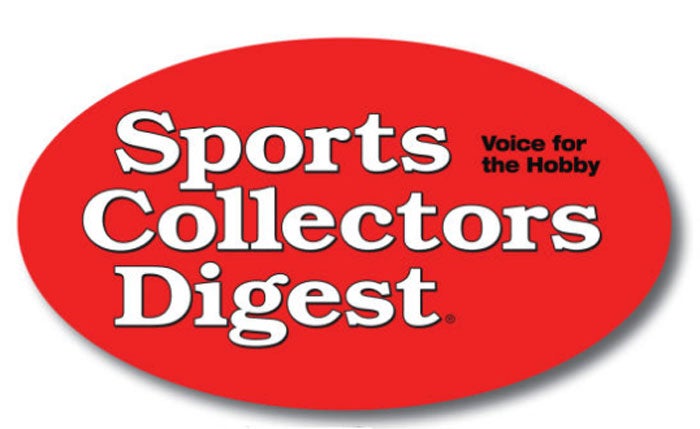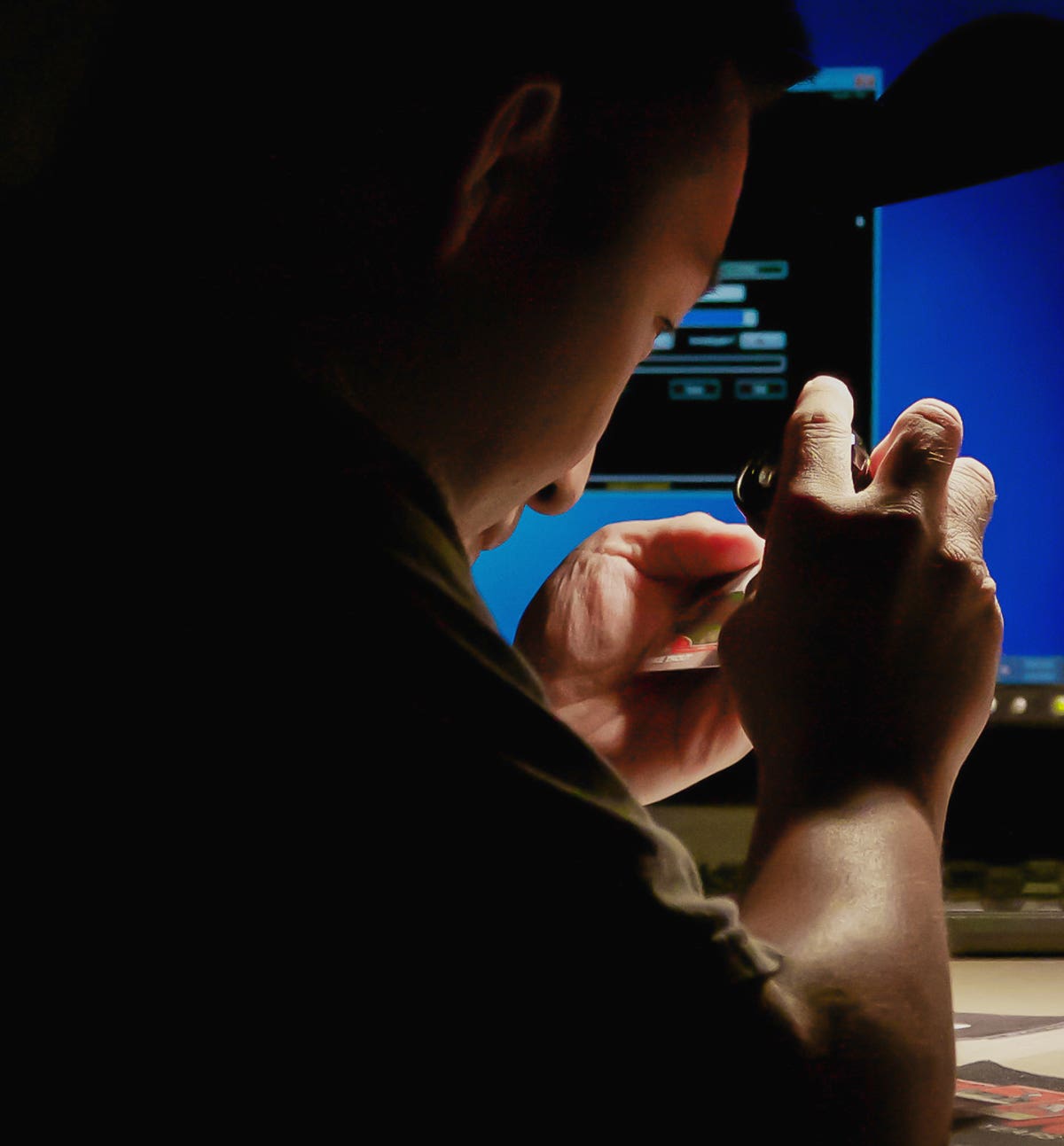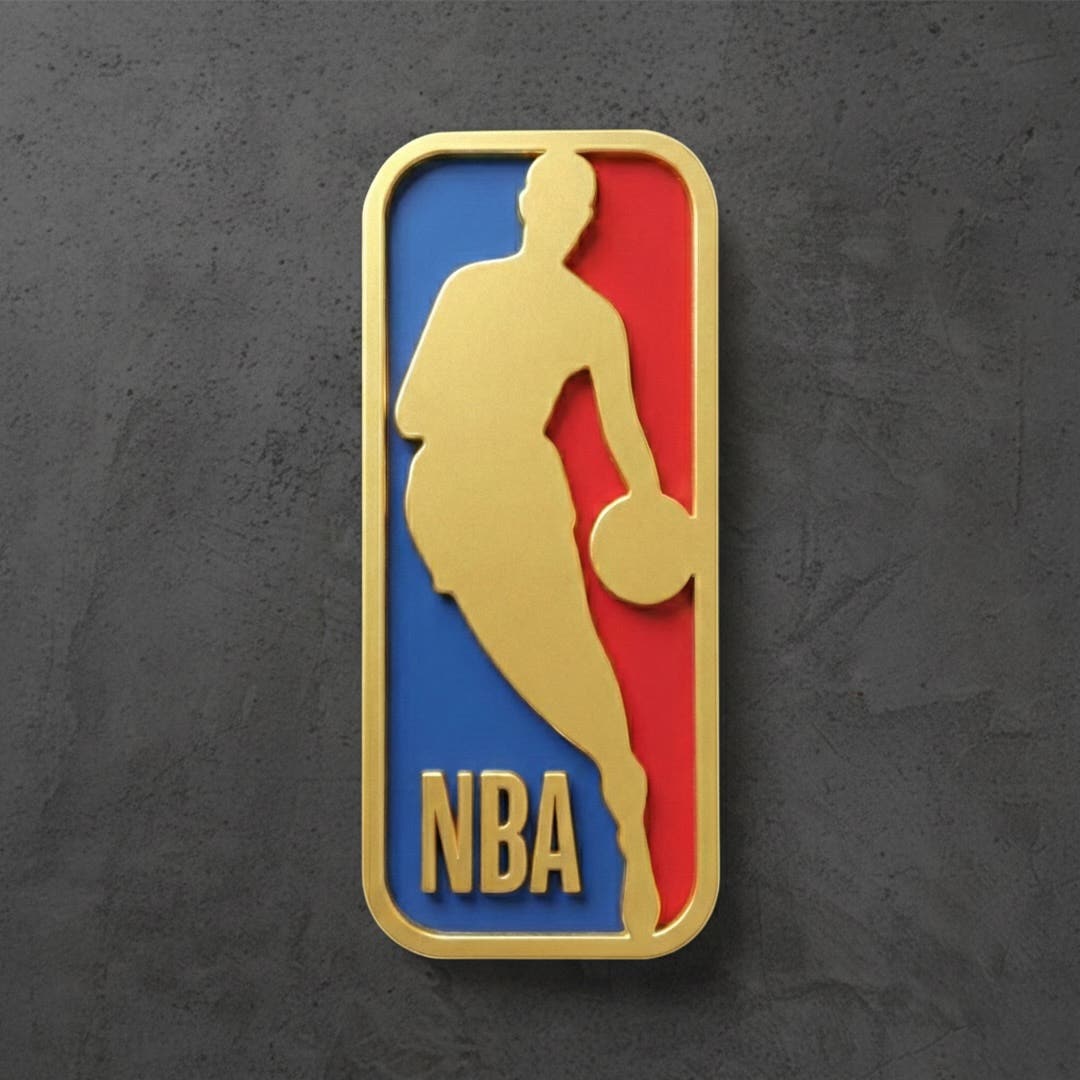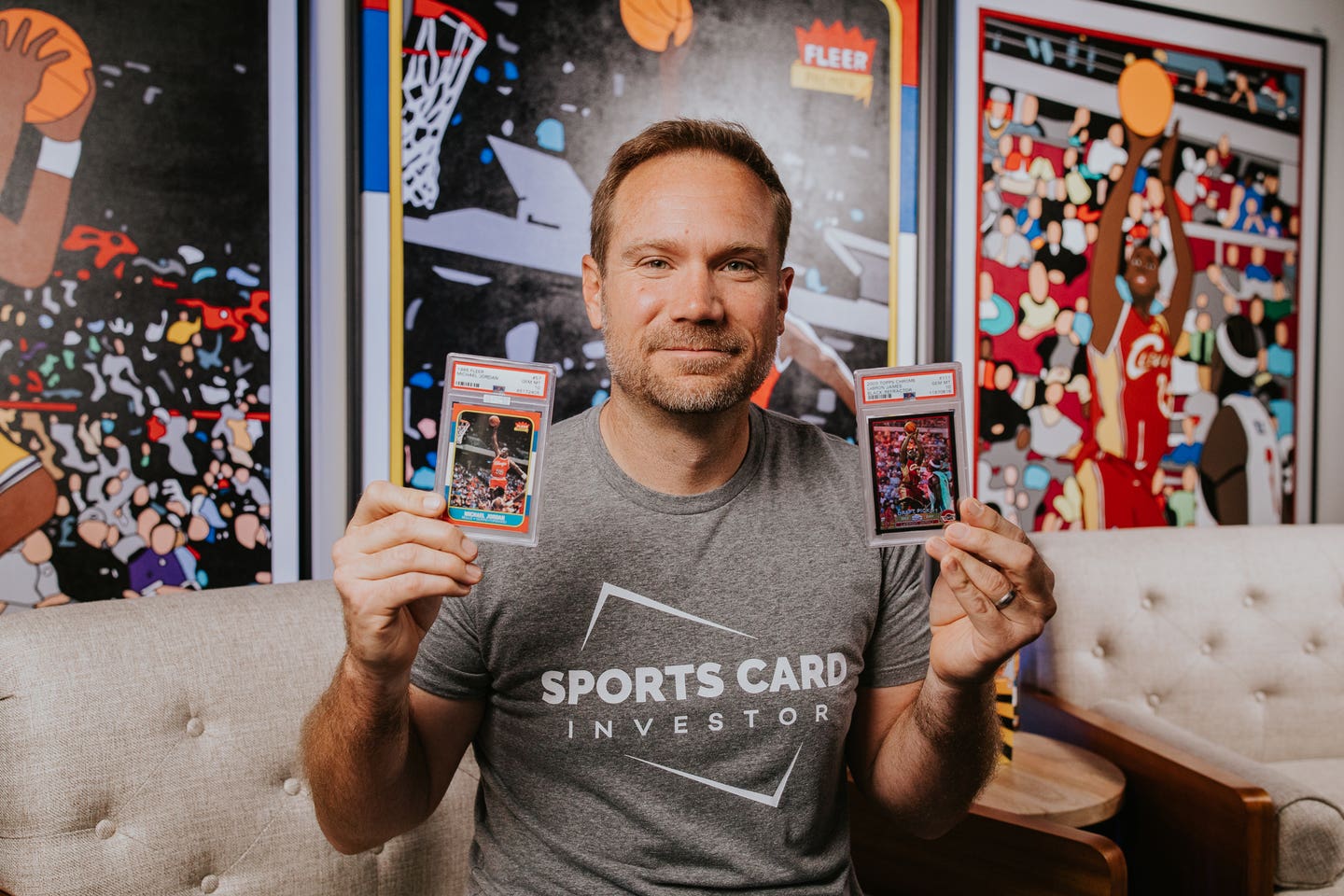Cards
Longtime dealer has attended 30 straight National Sports Collectors Conventions, and amassed quite a card collection
In three decades of attending the National Sports Collectors Convention, Jason Koonce has witnessed it all.
He’s suffered through the hard times in the hobby— the recession around 2008—and has shined during the prosperous times—the pandemic to present—and everything in between.
This upcoming National will mark the 30th consecutive convention Koonce will be walking the showroom floor. Koonce, who owns the card and memorabilia company One Team International Agency, aka OTIA Sports, is one of very few collectors and dealers who have an extended streak of taking a yearly pilgrimage to The National.
“I know being the young guy, and now kind of being the older guy, I’ve seen a lot of the vintage guys pass away,” Koonce said. “I don’t know of anybody else currently that has that streak going, because, unfortunately, people have passed away.
“I think it’s wild now that 20-25 years ago when I told people what I did for a living there was almost like this embarrassment or people were like, ‘How do you make money?’ Or, ‘What do you really do to support yourself?’ And seeing it completely flip-flop to like everyone’s got the camera footage and they’re all like documenting their stuff now. It’s a super cool thing that when you tell people you’re in cards they’re like, ‘Oh, that’s so awesome.’ It’s done a 180.”
Related Content:
FIRST-TIME SIGNERS: Autograph collectors welcome big names for National debut
HUMBLE BEGINNING
Koonce’s attendance mark at The National had a humble beginning as a teenager. His first show was in St. Louis in 1995.
At just 13 years old, Koonce was wheeling-and-dealing with veteran dealers; he was into the hobby pretty heavily.
He doesn’t remember much about the ’95 convention, but he vividly recalls the following year in Anaheim, Calif. The size of the venue and crowd were overwhelming for the youngster.
“It was three massive rooms and all the major companies did a lot of interaction, which they took away for a long time and they’re kind of starting to bring it back with Fanatics doing stuff,” Koonce said. “That was an amazing show. I remember Anaheim vividly, because it was the first time where I was hustling deals at 14 years old and really actually making money flipping stuff.”
Prior to dealers and collectors relying on eBay for comps, Koonce would buy items from a dealer and walk 50 booths away and sell an item for a profit. He was a real mover and shaker.
The 1997 show was in Cleveland. By that time, Koonce had established relationships with some big dealers and was making a name for himself in the industry.
“At that show, what was special was that four or five of us realized that the Topps Chrome set in basketball with Kobe and all them, that they were a lot more limited than the regular Topps. This information wasn’t available,” Koonce said. “We kind of discovered that and we were kind of keeping it a secret. I remember I was paying like $8 to $10 for Topps Chrome Kobe rookies. We were guessing still. We were comparing them to what we saw in the regular Topps. We were like, ‘I think these are a lot more limited than people are realizing.’ We loaded up on Topps Chrome Basketball, and we ended up making a fortune.”
At The National in the mid-’90s, dealers attended the shows in droves. The majority of inventory was vintage cards. But collectors got into modern cards in the late-’90s for a few key reasons.
“From what I’ve heard, the Nationals before the baseball strike in 1994 were crazy,” Koonce said.
“Everyone just kind of gave up on baseball. Then in ’98 with McGwire and Sosa—I was selling a lot of stuff on TV—that home run race really brought sports cards back. That was a huge, huge deal for baseball, and then that obviously trickled down to all the other sports.”
Koonce recalls Mark McGwire’s 1985 Topps Team USA card was topping out at $175 raw. Prior to his involvement in the home run race, Ken Griffey Jr. rookie cards, namely his 1989 Donruss, could be picked up for just $1.
A DIFFERENT TIME
Professional Sports Authenticator (PSA) graded its first card in 1991, but the company still wasn’t fully established a decade later. Koonce remembers that the 2003 National in Atlantic City, N.J. was a big show for PSA and competitor Beckett Grading Services (BGS).
“At that point, Beckett was maybe as big as PSA,” Koonce said. “They kind of came onto the scene at the 2000 Anaheim show. And in 2000, Beckett was actually better than PSA as far as grading goes, which is crazy.”
Koonce was buying cards at the convention and getting them graded on site. He was even able to secure some solid prices.
“We had negotiated deals down to $20 for on-site grading, and who knows what it is now,” Koonce said. “I know in ’07, after 9/11, there were points where like PSA was barely getting by. They would call us—their stock was at $1—and say, ‘Could you get us 10,000 cards this week?’ And we were paying $3 per card, maybe $2.75 a card—negotiating rates just for them to make payroll and keep going. There’s a handful of people that created liquidity and kept PSA up and really kept the market going in this, I would say a good seven-year span where things were tough. You could go to some of these Nationals and there was some action, but the aisles were nothing like what people have seen in the last five years.”
Holding live auctions during The National used to be a frequent occurrence for the big auction houses. Koonce would partake in these. He and his buddies would have a little fun by stealing each other’s paddles and placing bids. Koonce can recall that during one of the conventions in Cleveland in either 2007 or ’09, things got a little out of hand with his friends during an auction.
“One of the guys took my paddle and won a ’52 Topps Mantle 8 for like $62,000. I remember being in like such panic mode,” Koonce said. “I ended up flipping it and making a couple grand and thinking like, thank God, I was able to get rid of that. It was the highest price paid at the time, and you never really want to be that.”
During a rough stretch in the economy during about 2007-09, Koonce was presented the opportunity to pick up some big cards at The National.
“I remember getting offered two SP PSA 10 Jeter rookies and the guy wanted $5,000 for the pair,” Koonce said. “I wanted to pay $4,000, and he was stuck at $4,500. I ended up not buying them. Those Jeter SPs peaked during Covid for like $700,000 to $800,000, and I think it’s probably a $300,000 or $400,000 card now.”
With all-time attendance records being broken during the past two Nationals, the convention and the hobby is in great shape. Koonce loves having so much interest and a spotlight on the show.
“I think it’s a really good thing,” he said. “I’m excited it’s in Chicago for the next three years. I do think Chicago’s the best location for it. I’m worried that as massive as the convention center is in Rosemont, if it keeps growing at this rate, I don’t know if it’s going to be able to hold us.
“I do like the location. A lot of people like to switch it up. Comic-Con in San Diego, it’s the same location, same dates every year, it allows people to plan out their year ahead. I work with people at The National, I’ve talked to him. I’m like, ‘You guys need to have a booth that’s like pre-booking people for the next year, getting tickets sold for the next year, getting hotels set up.’”
The Donald E. Stephens Convention Center in Rosemont, Ill. hosted its first National in 2002. This year will mark the 11th time the show has been held at that venue. Koonce remembers 20 years ago when the area surrounding the convention center consisted of just two hotels and a big, wide-open field. The area has been built up so much with dozens of hotels, restaurants and an outlet mall.
AN AMAZING PC
Over the years through his business interactions and as an individual collector, Koonce has amassed an amazing personal collection.
“I am mostly tucking away vintage, that’s kind of what I believe in,” Koonce said. “I have an overwhelming amount of stuff. The scary thing is, every time in my life that I’ve tried to diversify from cards to other assets, stocks, real estates, if I just would have stayed with cards, the investment always would have turned out better.”
He figures he owns between 350-400 1986 Fleer Michael Jordan rookie cards. In November 2019, just a few months before Covid, when card prices spiked, Koonce was offered $40,000 each for six PSA 10 Jordans. That was the highest the card had ever climbed at the time, and Koonce couldn’t say no to a good deal and sold them all. At the height of Jordan rookie prices, a PSA 10 sold for $738,000 at auction. You win some, you lose some.
Koonce still owns 102 Jordans in a PSA 9. The PSA population report for that specific grade is just over 3,000. However, Koonce believes that number is closer to 2,000 because some collectors have cracked their slabs for regrading.
Koonce’s collection of the iconic 1948 Leaf Jackie Robinson rookie card is in the triple digits, once topping 200. He also has 50 cards of the 1980 Topps Magic Johnson/Larry Bird rookie in a PSA 9; the pop report for that grade is just north of 600.
“A lot of the stuff that I believe in, I have that type of quantity in everything—Jackies, Bird/Magics, and Gretzky rookies,” Koonce said. “I just think in general you buy the best of the best. It’s pretty wild now that Jordan has like one, maybe two rookies—obviously, if you include Star—and when you get to Brady, he has 135 different rookies.”
Koonce is asked on a regular basis which cards are essential to start an impressive collection. It is certainly budget dependent, but Koonce’s list include: the 1952 Topps Mantle; 1951 Bowman Mantle; 1948 Leaf Robinson; 1986 Fleer Jordan; 1979 O-Pee-Chee Wayne Gretzky; any of the four 1933 Goudey Babe Ruth cards; and any of the T206 Ty Cobb cards.
“What I love so much is that if you’re wealthy, there’s a card for you. If you don’t make a lot of money, you could still grind and buy a Jordan in a PSA 1 or a 2. If you have a lot of money, you can buy a Jordan in a 9 or a 10,” Koonce said. “There are these different ranges for people based off the grade. If you want a Bird/Magic rookie, you can get that for a couple hundred bucks in a 6. Or you can spend $400,000 in a PSA 10.
“I think that’s a really cool thing about the hobby to get different tiers of people to buy the card, just different grades.”







